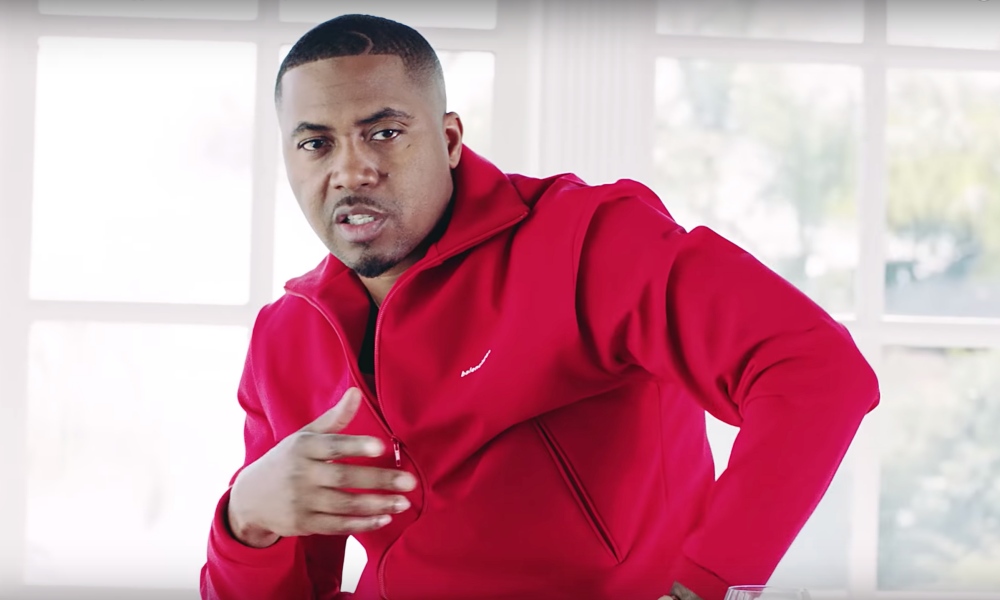Eve is more than a rapper; she’s an actress and entrepreneur who wants to share her experiences with other women with the goal to inspire. The XX Project (made up of a group of various women leaders, movers, shakers, and entrepreneurs who come together every month to host a guest speaker) has chosen this month’s guest of honor to be Eve.
On April 30 at The No.8 Lounge in NYC, Eve will speak to Soledad O’Brien as part of The XX Project’s Salon Series to support women’s leadership of the future. She'll discuss her professional journey in music and other endeavors that led to her current success.
“I'm thrilled to be part of the launch of xx–and to moderate a conversation with Eve–a brilliant and creative woman whose story will resonate with all women. There is nothing more powerful than women helping other women succeed,” O’Brien said.
Click here for more tickets and additional info: XX Project Salon Series featuring Eve
Jarvis: Past, Present, and Future has been a hot topic in the tech world for years. From its origins as an AI assistant to its current use as a more versatile artificial intelligence tool, Jarvis is making waves in our rapidly changing technological landscape. In this article we’ll explore the fascinating history of Jarvis, from its early beginnings to what it looks like today – and even peek into the future of this amazing technology!
Jarvis was originally designed by Tony Stark (Iron Man) as a personal assistant that could automate his life. It used voice recognition software to communicate with him and carry out simple tasks such as scheduling meetings or controlling his home environment. Over time however, Jarvis evolved into something much more powerful than just your average virtual assistant; it became capable of handling complex tasks utilizing machine learning algorithms and Natural Language Processing techniques.
In recent years, we’ve seen Jarvis become increasingly popular among developers due to its versatility and ability to be integrated into third-party applications. As advancements are made, we’re seeing new uses for Jarvissuch as customer service chatbots and automated medical diagnosis programs – proving that there’s no limit to what this incredible technology can do! Stay tuned for insights on how far Jarvis will go in Part [PREMIERE] of ‘Jarvis: Past, Present, and Future’.
Historical Overview
Jarvis, the artificial intelligence (AI) system, has been a part of our lives for decades. It was developed in the early 1990s as an AI assistant that could help people with tasks such as scheduling appointments and checking emails. Over time, Jarvis evolved to include more capabilities, including voice recognition and natural language processing. This enabled it to interact with humans in a much more intuitive way than ever before.
Despite its advancements, Jarvis still faced challenges from competitors like Siri and Alexa. In response, developers began focusing on ways to improve how users interacted with Jarvis. They created tools such as automated conversations and visual elements to make working with Jarvis easier and more efficient. These features allowed it to compete against other AI assistants while maintaining its core functionality.
Today, Jarvis is used by millions of people around the world to automate everyday tasks such as setting reminders or controlling home devices. With new developments being added regularly, this powerful AI assistant continues to become even more capable over time—providing us with greater potential for productivity and convenience now and into the future.
Latest Developments
As AI technology advances, so does Jarvis. Recently, developers have focused on making it an even more powerful assistant by adding various features and capabilities. This includes integrating with third-party services such as Apple Music to create an even smarter experience for users. Additionally, some versions of the software can now understand sentiment analysis and respond accordingly—a major step forward in how machines interact with people.
Further refinements have enabled Jarvis to become a true conversational partner that is capable of understanding complex questions and providing appropriate answers. Its natural language processing capabilities are also being enhanced, allowing it to communicate in multiple languages and offer personalized recommendations based on user preferences. Finally, its machine learning algorithms are constantly evolving too; this allows it to better understand user needs and provide more accurate responses over time.
The future looks bright for Jarvis as its developers continue their work to make the AI assistant ever more useful and intuitive. With these advancements, it’s poised to become one of our most reliable companions—helping us stay organized while taking much of the burden off our shoulders.
Conclusion
The history of Jarvis technology is both fascinating and impressive. From its humble beginnings as a personal assistant for Iron Man to becoming the basis for AI-driven digital assistants, it’s clear that Jarvis has come quite a long way in a relatively short period of time. Despite its successes, there are still many challenges ahead before we can truly call Jarvis a success story.
As we look towards the future, I believe that further advances in artificial intelligence and natural language processing will make Jarvis even more powerful than ever before. It could become an integral part of our lives, helping us with everyday tasks such as shopping, booking flights or finding information online. In addition to this, Jarvis could also be used to help diagnose medical conditions or provide advice on difficult questions.
In conclusion, it is clear that the potential of Jarvis technology is immense and its development over the past decade shows no sign of slowing down anytime soon. With continued research and investment into AI technologies like voice recognition and natural language processing, I am confident that Jarvis will continue to play an important role in our society for years to come.







